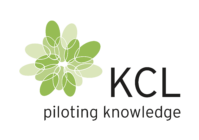When it comes to choosing between barrier coatings and traditional packaging, barrier coatings often provide a superior solution, especially in preserving product quality and extending shelf life. This article explores the key differences, performance enhancements, environmental impacts, and cost considerations of these packaging solutions.
What are the differences between barrier coating and traditional packaging?
Barrier coatings are specialized materials applied to packaging substrates to enhance their protective properties. These coatings create a barrier against moisture, oxygen, and other environmental factors, extending the shelf life of products. Traditional packaging, on the other hand, often relies on materials like plastics, glass, or metal, which may not offer the same level of protection without additional treatments.
The processes involved also differ significantly. Barrier coatings can be applied to a variety of substrates, including paper and cardboard, making them versatile for sustainable packaging solutions. Traditional packaging materials may require more complex manufacturing processes and are typically less adaptable to eco-friendly innovations.
How do barrier coatings enhance packaging performance?
Barrier coatings significantly improve packaging performance by providing exceptional moisture resistance and oxygen barrier properties. These coatings help maintain the freshness and quality of perishable goods, ensuring that they remain safe for consumption over longer periods.
In addition to preserving product quality, barrier coatings can enhance the visual appeal of packaging materials. They provide a smooth, uniform finish that can be customized with various textures and gloss levels, making products more attractive on store shelves.
What are the environmental impacts of barrier coatings versus traditional packaging?
Barrier coatings offer a more sustainable option compared to traditional packaging. They can be applied to biodegradable materials, such as paper, reducing the reliance on non-renewable resources like plastics. This makes barrier coatings an ideal choice for companies looking to minimize their environmental footprint.
Traditional packaging materials, particularly plastics, pose significant environmental challenges due to their limited recyclability and long decomposition times. In contrast, barrier coatings support eco-friendly packaging initiatives by enabling the use of renewable and recyclable materials, aligning with global sustainability goals.
How does cost compare between barrier coating and traditional packaging?
The cost of implementing barrier coatings can vary depending on the materials and processes involved. While initial investments may be higher than traditional packaging, the long-term benefits, such as extended product shelf life and reduced waste, often result in significant savings.
Traditional packaging may offer lower upfront costs, but the potential for increased waste and environmental impact can lead to higher expenses over time. Companies must consider these factors when choosing the most cost-effective and sustainable packaging solution for their products.
Conclusion
Barrier coatings provide a modern and effective solution for enhancing packaging performance, offering superior protection against environmental factors and supporting sustainability efforts. While traditional packaging may be more cost-effective initially, barrier coatings present long-term benefits in terms of product preservation and environmental impact. Companies seeking to improve their packaging solutions should carefully weigh these advantages and consider integrating barrier coatings into their product development processes.
